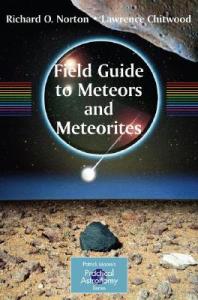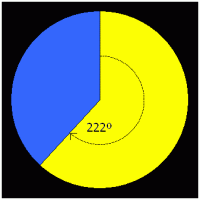I can recommend George Orwell’s essay “Politics and the English Language” (1946) to anyone who wants to write better English. Or better French, Georgian, Arabic, Mandarin or Tagalog, because some of Orwell’s advice is universal. But perhaps the essay is partly a joke: Orwell may deliberately have committed some of the literary sins he criticizes. Or not deliberately. Orwell wasn’t infallible, despite his modern cult. He wasn’t a perfect observer either, but I don’t think his failure to criticize “in terms of” in the essay is a bad oversight. The phrase wasn’t the blight in his day that it is today. All the same, you can see its spores beginning to drift through the flower-beds of English literature in the 1930s and ’40s. Orwell himself uses it nineteen times in the Fifty Orwell Essays available at the Australian Gutenberg site. But that’s roughly one I.T.O. for every 12,000 words or 2·63 essays, which I think is a healthy ratio. No I.T.O.’s at all would have been even healthier, though some are defensible and may be the best way of expressing Orwell’s thought. Others, however, seem to me to be tending towards Guardianese. I’ve collected them all here and suggested alternatives. Sometimes it might be better to re-write more fully, but only two alternatives are longer than the I.T.O. they replace (orthographically, at least).
From Charles Dickens:
More completely than most writers, perhaps, Dickens can be explained in terms of his social origin, though actually his family history was not quite what one would infer from his novels. → More completely than most writers, perhaps, Dickens can be explained by / through his social origin, though actually his family history was not quite what one would infer from his novels.
What now strikes us as remarkable about the new moneyed class of the nineteenth century is their complete irresponsibility; they see everything in terms of individual success, with hardly any consciousness that the community exists. → What now strikes us as remarkable about the new moneyed class of the nineteenth century is their complete irresponsibility; they see everything by / through individual success, with hardly any consciousness that the community exists.
When he speaks of human progress it is usually in terms of moral progress – men growing better; probably he would never admit that men are only as good as their technical development allows them to be. → When he speaks of human progress it is usually as moral progress – men growing better; probably he would never admit that men are only as good as their technical development allows them to be.
I have been discussing Dickens simply in terms of his “message”, and almost ignoring his literary qualities. → I have been discussing Dickens simply by / through his “message”, and almost ignoring his literary qualities.
The truth is that it is absurd to make such comparisons in terms of “better” and “worse”. → The truth is that it is absurd to make such comparisons with / by “better” and “worse”.
Charles Dickens (1940)
From Inside the Whale:
Alliances, changes of front etc., which only make sense as part of the game of power politics have to be explained and justified in terms of international socialism. → Alliances, changes of front etc., which only make sense as part of the game of power politics have to be explained and justified by / through international socialism.
Miller replied in terms of extreme pacifism, an individual refusal to fight, with no apparent wish to convert others to the same opinion – practically, in fact, a declaration of irresponsibility. → Miller replied as an extreme pacifist, as an individual refusing to fight, with no apparent wish to convert others to the same opinion – practically, in fact, a declaration of irresponsibility.
Inside the Whale (1940)
From The Lion and the Unicorn:
At the same time the Labour Party was a Socialist party, using Socialist phraseology, thinking in terms of an old-fashioned anti-imperialism and more or less pledged to make restitution to the coloured races. → At the same time the Labour Party was a Socialist party, using Socialist phraseology, thinking of / by an old-fashioned anti-imperialism and more or less pledged to make restitution to the coloured races.
Because the time has come when one can predict the future in terms of an “either–or”. → Because the time has come when one can predict the future with / by an “either–or”.
The Lion and the Unicorn: Socialism and the English Genius (1941)
From Looking Back on the Spanish War:
I saw, in fact, history being written not in terms of what happened but of what ought to have happened according to various “party lines”. → I saw, in fact, history being written not by what happened but by what ought to have happened according to various “party lines”.
Looking Back on the Spanish War (1942)
From Antisemitism in Britain:
There is more antisemitism in England than we care to admit, and the war has accentuated it, but it is not certain that it is on the increase if one thinks in terms of decades rather than years. → There is more antisemitism in England than we care to admit, and the war has accentuated it, but it is not certain that it is on the increase if one thinks in decades rather than years.
Antisemitism in Britain (1945)
From In Defence of P. G. Wodehouse:
He had missed the turning-point of the war, and in 1941 he was still reacting in terms of 1939. → He had missed the turning-point of the war, and in 1941 he was still reacting as though it were 1939.
In Defence of P. G. Wodehouse (1945)
From Notes on Nationalism:
A nationalist is one who thinks solely, or mainly, in terms of competitive prestige. → A nationalist is one who thinks solely, or mainly, of / by competitive prestige.
In practice, however, the necessary calculations cannot be made, because anyone likely to bother his head about such a question would inevitably see it in terms of competitive prestige. → In practice, however, the necessary calculations cannot be made, because anyone likely to bother his head about such a question would inevitably see it through / by competitive prestige.
But Chesterton was not content to think of this superiority as merely intellectual or spiritual: it had to be translated into terms of national prestige and military power, which entailed an ignorant idealisation of the Latin countries, especially France. → But Chesterton was not content to think of this superiority as merely intellectual or spiritual: it had to be translated into national prestige and military power, which entailed an ignorant idealisation of the Latin countries, especially France.
History is thought of largely in nationalist terms, and such things as the Inquisition, the tortures of the Star Chamber, the exploits of the English buccaneers (Sir Francis Drake, for instance, who was given to sinking Spanish prisoners alive), the Reign of Terror, the heroes of the Mutiny blowing hundreds of Indians from the guns, or Cromwell’s soldiers slashing Irishwomen’s faces with razors, become morally neutral or even meritorious when it is felt that they were done in the ‘right’ cause. → History is thought of largely through nationalism, and such things as the Inquisition, the tortures of the Star Chamber, the exploits of the English buccaneers (Sir Francis Drake, for instance, who was given to sinking Spanish prisoners alive), the Reign of Terror, the heroes of the Mutiny blowing hundreds of Indians from the guns, or Cromwell’s soldiers slashing Irishwomen’s faces with razors, become morally neutral or even meritorious when it is felt that they were done in the ‘right’ cause.
Notes on Nationalism (1945)
From The Sporting Spirit:
It is the most violently combative sports, football and boxing, that have spread the widest. There cannot be much doubt that the whole thing is bound up with the rise of nationalism – that is, with the lunatic modern habit of identifying oneself with large power units and seeing everything in terms of competitive prestige. → There cannot be much doubt that the whole thing is bound up with the rise of nationalism – that is, with the lunatic modern habit of identifying oneself with large power units and seeing everything by competitive prestige.
The Sporting Spirit (1945)
From Books vs. Cigarettes:
Exactly what reading costs, reckoned in terms of pence per hour, is difficult to estimate, but I have made a start by inventorying my own books and adding up their total price. → Exactly what reading costs, reckoned in pence per hour, is difficult to estimate, but I have made a start by inventorying my own books and adding up their total price.
There are books that one reads over and over again, books that become part of the furniture of one’s mind and alter one’s whole attitude to life, books that one dips into but never reads through, books that one reads at a single sitting and forgets a week later: and the cost, in terms of money, may be the same in each case. → There are books that one reads over and over again, books that become part of the furniture of one’s mind and alter one’s whole attitude to life, books that one dips into but never reads through, books that one reads at a single sitting and forgets a week later: and the cost, in money, may be the same in each case.
Books vs. Cigarettes (1946)
From Writers and Leviathan:
Quite largely, indeed, the workers were won over to Socialism by being told that they were exploited, whereas the brute truth was that, in world terms, they were exploiters. → Quite largely, indeed, the workers were won over to Socialism by being told that they were exploited, whereas the brute truth was that, viewed from overseas, they were exploiters.
Writers and Leviathan (1948)
From Reflections on Gandhi:
Even when he was fighting what was in effect a color war, he did not think of people in terms of race or status. → Even when he was fighting what was in effect a color war, he did not think of people by race or status.
At the same time there is reason to think that Gandhi, who after all was born in 1869, did not understand the nature of totalitarianism and saw everything in terms of his own struggle against the British government. → At the same time there is reason to think that Gandhi, who after all was born in 1869, did not understand the nature of totalitarianism and saw everything through his own struggle against the British government.
Reflections on Gandhi (1949)
Previously pre-posted (please peruse):








